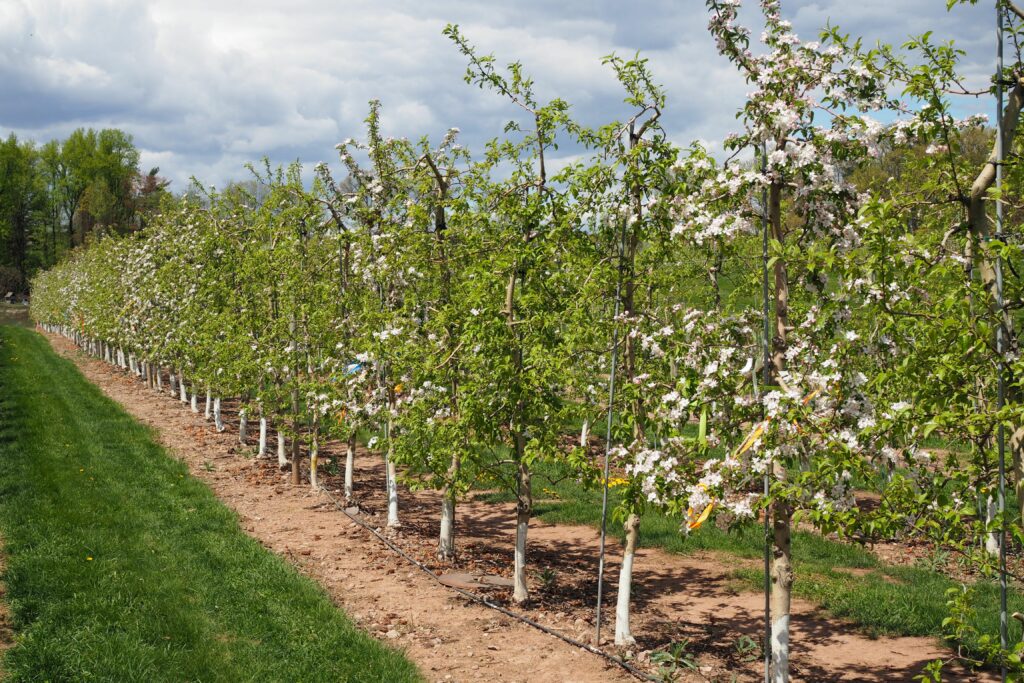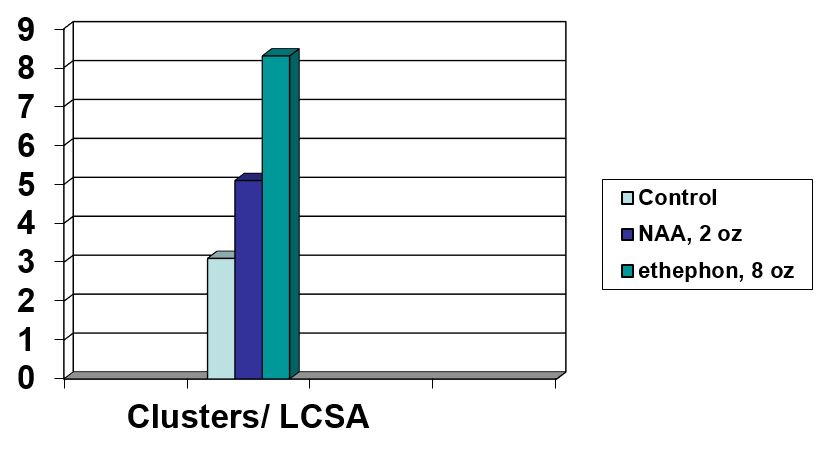Horticultural Update: Return Bloom Programs
go.ncsu.edu/readext?868399
en Español / em Português
El inglés es el idioma de control de esta página. En la medida en que haya algún conflicto entre la traducción al inglés y la traducción, el inglés prevalece.
Al hacer clic en el enlace de traducción se activa un servicio de traducción gratuito para convertir la página al español. Al igual que con cualquier traducción por Internet, la conversión no es sensible al contexto y puede que no traduzca el texto en su significado original. NC State Extension no garantiza la exactitud del texto traducido. Por favor, tenga en cuenta que algunas aplicaciones y/o servicios pueden no funcionar como se espera cuando se traducen.
Português
Inglês é o idioma de controle desta página. Na medida que haja algum conflito entre o texto original em Inglês e a tradução, o Inglês prevalece.
Ao clicar no link de tradução, um serviço gratuito de tradução será ativado para converter a página para o Português. Como em qualquer tradução pela internet, a conversão não é sensivel ao contexto e pode não ocorrer a tradução para o significado orginal. O serviço de Extensão da Carolina do Norte (NC State Extension) não garante a exatidão do texto traduzido. Por favor, observe que algumas funções ou serviços podem não funcionar como esperado após a tradução.
English
English is the controlling language of this page. To the extent there is any conflict between the English text and the translation, English controls.
Clicking on the translation link activates a free translation service to convert the page to Spanish. As with any Internet translation, the conversion is not context-sensitive and may not translate the text to its original meaning. NC State Extension does not guarantee the accuracy of the translated text. Please note that some applications and/or services may not function as expected when translated.
Collapse ▲
Inconsistent return bloom of ‘Golden Delicious’. Trees with strong return bloom were part of a blossom thinning experiment. Adjacent non-flowering trees were hand-thinned after June drop. In varieties that are prone to biennial bearing, an effective chemical thinning program and the use of a return bloom program is essential to promote consistent cropping.
This is an appropriate timing to initiate a return bloom program for apples in the southeastern US. Since products that promote return bloom also have thinning activity, return bloom programs should be initiated when fruit size is between 30 and 35 mm (i.e. insensitive to chemical thinners).
In the southeast (NC, SC, and GA), two different programs are typically used to promote return bloom:
1) Four bi-weekly sprays of 5 ppm NAA (Fruitone L; PoMaxa; Refine, etc.). These applications generally occur in June and July. With NAA programs, the rate is constant regardless of variety and can be included in cover sprays.
2) A single or double application ethephon program (Ethrel; Ethephon 2; Motivate, etc.). These programs start at 6 to 8 weeks after bloom. Ethephon rates are determined by several factors, including: variety, crop load, and history of alternate bearing (see Table 1). As a result, this application must occur as a separate spray and requires an additional trip through the orchard. On varieties with a strong alternate bearing habit (‘Fuji’ and ‘Cameo’), a 2nd application of ethephon should be considered. The 2nd application occurs 2 to 3 weeks after the initial application.
Both programs have been effective in the southeastern US. McArtney et al. (2007) determined that four bi-weekly applications of 5 ppm NAA was generally as effective as a single application of ethephon. As stated above, NAA programs can be incorporated into cover sprays and use a consistent rate across cultivars. Conversely, single-application ethephon programs require a separate trip through the orchard and application rates are variety specific and/or subjective.
Table 1. Typical Southeastern Apple Return Bloom Sprays
| Goal | Chemical | Rate and Time of Application |
| To increase return bloom for the following season, especially on heavily cropped trees. |
NAA (Fruitone L, PoMaxa, or ReFine 3.5WSG) |
5 ppm (2 oz/100 gal), or 2.5 ppm + surfactant After the chemical fruit-thinning window has passed (typically 6 weeks past petal fall), use biweekly applications of NAA in the next three to four cover sprays. This can generally be accomplished with two applications in June and two in July for apple-growing areas in the Southeast. NAA applications may be tank mixed with pesticide cover sprays. If captan is included in cover sprays, do not add a surfactant. |
|
Ethephon (Ethrel, Ethephon 2, Motivate, etc.) |
16 to 72 fl. oz per acre depending on cultivar, crop load and history of biennial bearing. Use 16 to 24 fl. oz per acre on Gala, Rome, Red Delicious; 24 to 48 fl. oz acre on Golden Delicious; 48 to 72 oz/acre on Fuji, Cameo. Make a single application five to six weeks after bloom. Consider a second application two to three weeks later if the crop load is excessive. This use pattern with Ethephon is not recommended on Honeycrisp. |
Alternatives?
For those that have been dissatisfied with these programs for any reason (I generally get questions about ‘Fuji’), there are some alternatives to consider. Interestingly, different use patterns of these two materials are used widely in other eastern production areas to promote return bloom (VA, PA, etc.). Specifically, 3 to 4 applications of:
- 5 ppm NAA (2 oz. of a 3.5% a.i. NAA product per 100 gallons) at 7 to 10 day intervals. With NAA programs, the rate is constant regardless of variety and can be included in cover sprays.
- 150 ppm ethephon (8 fl. oz. of a 21.7% a.i. ethephon product per 100 gallons) at 7 to 10 day intervals. With this low rate of ethephon, the rate is constant regardless of variety and can be included in cover sprays.
Please note the tighter interval proposed here (7 to 10 days between applications). The idea behind this use pattern is to apply return bloom promoting compounds earlier in the season to better align with when flower buds are initiated on alternate bearing cultivars. In general, apple cultivars that are prone to alternate bearing initiate flower buds earlier in the season than annual bearing cultivars.
Additionally, use of tighter intervals results in the earlier completion of the return bloom program. Potential negative impacts of these programs (premature ripening/fruit softening) are reduced, since later applications are not as close to harvest, especially on early maturing varieties.
Are alternative programs effective?
Previous work by Jim Schupp (Penn State University) compared these two programs in a mature ‘Fuji’/’M.26’ orchard in a bearing year. Three applications were made at ~7 day intervals and return bloom was assessed in the following year by counting the number of flower clusters on several limbs per tree and standardizing the number of flower clusters by the size of the limbs (blossom cluster density). Both materials (NAA and ethephon) increased blossom cluster density relative to the control (doing nothing). While both materials were effective, low-dose ethephon was a stronger promoter of return bloom when compared to NAA.

Fig. 1 Comparison of return bloom programs on blossom cluster density of ‘Fuji’/’M.26’. Three applications of low rate NAA and ethephon were effective in increasing return bloom compared to the control. Data/figure provided by Jim Schupp.
Additional Considerations
- If a return bloom program is started too early, then there is risk of additional thinning. Risk is generally greater with ethephon-based programs.
- If a return bloom program is ended too late (late July), early ripening cultivars will be prone to advanced ripening/fruit softening.
- Avoid application if maximum daily temperatures exceed 85 °F to minimize potential negative effects (additional thinning and advanced ripening).
- If including these programs as part of a cover spray, then keep surfactant out of the tank. These programs generally coincide with Captan as part of the tank mix for management of fungal pathogens. Captan + surfactants do not play nice and can cause phytotoxicity.
While these products are useful management tools to promote consistent cropping, adoption/use will not result in miracles. Blocks/trees with excessively heavy crop loads may not respond to return bloom sprays. Additionally, inconsistent/poor responses may be observed with weak trees, excessively vigorous trees, and unpruned/heavily shaded trees. Environmental conditions, such as water stress and/or heat stress, can also contribute to inconsistent responses.
References
Schupp, J.R. 2017. Apple PGRs – Promoting Return Bloom. Penn State Extension.


